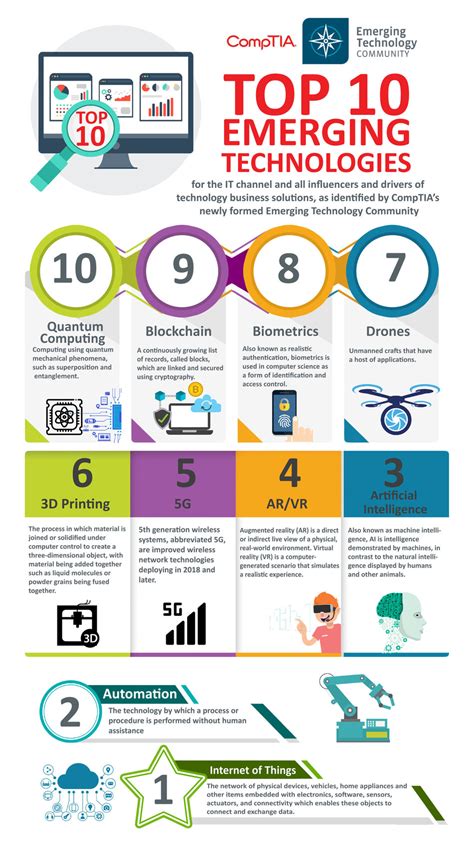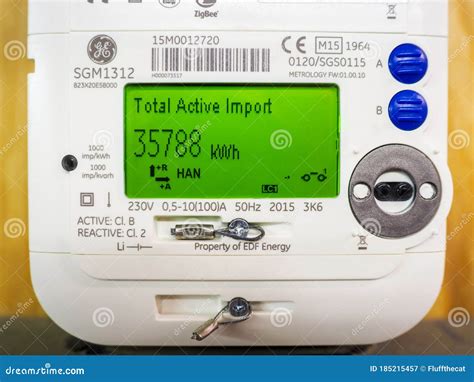The global energy landscape is undergoing a significant transformation, driven by the need to reduce carbon emissions and mitigate climate change. As the world transitions towards a more sustainable and renewable energy mix, several emerging energy technologies are gaining prominence. These innovations have the potential to revolutionize the way we generate, distribute, and consume energy, enabling a more efficient, resilient, and environmentally friendly energy system. In this article, we will explore five emerging energy technologies that are poised to make a significant impact in the coming years.
Key Points
- Advanced nuclear power technologies, such as small modular reactors (SMRs) and integral pressurized water reactors (iPWRs), offer improved safety, efficiency, and cost competitiveness.
- Hydrogen fuel cells are gaining traction as a promising alternative to traditional fossil fuel-based power generation, with potential applications in transportation, industry, and electricity generation.
- Tidal and wave energy technologies are being developed to harness the vast renewable energy potential of the world's oceans, with the potential to power millions of homes and businesses.
- Artificial photosynthesis and bio-inspired solar cells are emerging as innovative solutions for converting sunlight into chemical energy, with potential applications in fuel production, chemicals, and electricity generation.
- Advanced geothermal systems, such as enhanced geothermal systems (EGS) and closed-loop geothermal systems, are being developed to unlock the vast geothermal energy potential of the Earth's crust, with potential applications in baseload power generation and heating/cooling systems.
Advanced Nuclear Power Technologies

Advanced nuclear power technologies, such as small modular reactors (SMRs) and integral pressurized water reactors (iPWRs), are being developed to address the safety, efficiency, and cost concerns associated with traditional nuclear power plants. These next-generation reactors offer improved passive safety features, reduced capital costs, and increased flexibility, making them an attractive option for both developed and developing countries. According to the International Energy Agency (IEA), SMRs could play a significant role in the global energy mix, with the potential to generate up to 10% of the world’s electricity by 2050.
Small Modular Reactors (SMRs)
SMRs are compact, modular reactors that can be built in a factory and transported to site, reducing construction time and costs. They are designed to be scalable, flexible, and highly efficient, with the ability to generate electricity, heat, and hydrogen. SMRs are being developed by several companies, including NuScale Power, Westinghouse, and Rolls-Royce, with the first commercial deployments expected in the mid-2020s.
Hydrogen Fuel Cells

Hydrogen fuel cells are gaining traction as a promising alternative to traditional fossil fuel-based power generation. They offer a clean, efficient, and reliable source of energy, with the potential to power transportation, industry, and electricity generation. Hydrogen fuel cells work by converting chemical energy into electrical energy, with water and heat as the only byproducts. According to the Hydrogen Council, the global hydrogen market could grow to $2.5 trillion by 2050, with the potential to create up to 30 million jobs.
Hydrogen Production Methods
Hydrogen can be produced through various methods, including steam methane reforming, electrolysis, and biomass gasification. However, the most promising method is electrolysis, which involves splitting water into hydrogen and oxygen using electricity. This method offers a clean and efficient way to produce hydrogen, with the potential to be powered by renewable energy sources such as solar and wind.
Tidal and Wave Energy
Tidal and wave energy technologies are being developed to harness the vast renewable energy potential of the world’s oceans. These technologies have the potential to power millions of homes and businesses, with the added benefit of reducing greenhouse gas emissions and mitigating climate change. According to the National Renewable Energy Laboratory (NREL), the global tidal and wave energy resource could provide up to 750 GW of electricity, which is equivalent to the power generation of over 1,000 nuclear reactors.
Tidal Energy Converters
Tidal energy converters are devices that harness the kinetic energy of tidal currents to generate electricity. They are typically installed in shallow coastal waters, where the tidal currents are strongest. Tidal energy converters can be designed to operate in various modes, including horizontal axis, vertical axis, and oscillating devices. According to the European Commission, tidal energy could provide up to 10% of the EU’s electricity by 2050.
Artificial Photosynthesis and Bio-Inspired Solar Cells
Artificial photosynthesis and bio-inspired solar cells are emerging as innovative solutions for converting sunlight into chemical energy. These technologies have the potential to produce fuels, chemicals, and electricity, with the added benefit of reducing greenhouse gas emissions and mitigating climate change. According to the National Science Foundation (NSF), artificial photosynthesis could provide up to 10% of the world’s energy by 2050, with the potential to power transportation, industry, and electricity generation.
Artificial Photosynthesis
Artificial photosynthesis involves the use of nanostructured materials and biomimetic systems to mimic the process of photosynthesis, which occurs in plants and algae. This process involves the conversion of sunlight, water, and carbon dioxide into glucose and oxygen. Artificial photosynthesis has the potential to produce a wide range of products, including fuels, chemicals, and pharmaceuticals.
Advanced Geothermal Systems

Advanced geothermal systems, such as enhanced geothermal systems (EGS) and closed-loop geothermal systems, are being developed to unlock the vast geothermal energy potential of the Earth’s crust. These systems offer a clean, reliable, and baseload source of energy, with the potential to power millions of homes and businesses. According to the Geothermal Energy Association (GEA), the global geothermal market could grow to $30 billion by 2025, with the potential to create up to 100,000 jobs.
Enhanced Geothermal Systems (EGS)
EGS involves the use of advanced drilling and stimulation techniques to enhance the permeability of hot rock formations, allowing for the efficient extraction of heat. This technology has the potential to unlock the vast geothermal energy potential of the Earth’s crust, with the added benefit of reducing greenhouse gas emissions and mitigating climate change. According to the U.S. Department of Energy, EGS could provide up to 10% of the country’s electricity by 2050.
| Emerging Energy Technology | Potential Impact |
|---|---|
| Advanced Nuclear Power | 10% of global electricity generation by 2050 |
| Hydrogen Fuel Cells | $2.5 trillion market size by 2050 |
| Tidal and Wave Energy | 750 GW of electricity generation potential |
| Artificial Photosynthesis | 10% of global energy production by 2050 |
| Advanced Geothermal Systems | $30 billion market size by 2025 |

What are the benefits of emerging energy technologies?
+The benefits of emerging energy technologies include reduced greenhouse gas emissions, improved energy efficiency, and enhanced energy security. They also have the potential to create new economic opportunities, stimulate innovation, and improve public health.
What are the challenges associated with emerging energy technologies?
+The challenges associated with emerging energy technologies include high upfront costs, technical complexity, and regulatory uncertainty. They also require significant investment, innovation, and policy support to overcome these challenges and achieve widespread adoption.
How can emerging energy technologies contribute to a low-carbon future?
+Emerging energy technologies can contribute to a low-carbon future by reducing greenhouse gas emissions, improving energy efficiency, and enhancing energy security. They can also provide a clean, reliable, and baseload source of energy, with the potential to power millions of homes and businesses.



